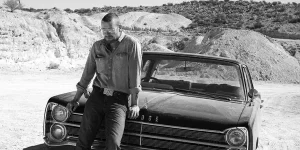Casino scenes, with their blend of opulence, suspense and high-stakes drama, have carved a prominent niche in the world of cinema, captivating audiences and leaving a lasting impression. In this article we will unravel the mystery behind the recurring presence of casino scenes in movies and the pivotal role they play in shaping a film’s popularity.
These scenes, characterized by glimmering roulette wheels, intense poker games and the allure of chance, have consistently garnered attention, drawing viewers into the intrigue of gambling establishments. From classic Hollywood productions to contemporary blockbusters, the casino scene’s charm remains undiminished.
Historical Significance
Delving into the annals of cinematic history, it becomes evident that casino scenes have been a recurring motif since the early days of filmmaking. The origins of such scenes in films can be traced back to the nascent stages of the medium when filmmakers began to experiment with various settings to engage audiences. In these early years, casino scenes were employed as a means to inject excitement and glamour into movies, offering a taste of the high life that many viewers could only dream of.
It’s within this tradition of capturing the casino’s allure that recent entertainments, like the Ashoka Demo, find their roots. Hollywood, in particular, recognized the appeal of casino settings and their potential to create intrigue and suspense.
Glamour and Intrigue
Casinos have an undeniable magnetic quality that translates seamlessly to the silver screen. The allure of casinos in movies stems from their ability to conjure up images of luxury and excitement. These establishments are often depicted as lavish, glamorous venues where characters can indulge in their desires, whether it be gambling, romance, or intrigue. Within this cinematic representation of opulence and thrill, Igt Slots have found a special place.
Known for their innovative technology and engaging gameplay, Igt Slots exemplify the excitement and potential for fortune that casinos represent, both in real life and in cinematic narratives. The association of casinos with luxury and excitement plays a pivotal role in their cinematic appeal, transporting the audience to a world where anything seems possible.
Furthermore, the association of casinos with luxury and excitement plays a pivotal role in their cinematic appeal. When characters step into a casino, the audience is transported to a world of wealth and extravagance, where anything seems possible. The glistening chandeliers, elegantly dressed patrons, and the constant hum of anticipation create an atmosphere of intrigue that keeps viewers enthralled.
It’s this magnetic pull of casinos like Slotozilla, captured in experiences like the Fire and Roses Jolly Joker Demo, that filmmakers harness to infuse their stories with a sense of grandeur and mystique, making them an integral element in the world of cinema.
Plot Device and Character Development
Filmmakers often utilize casino scenes to propel the storyline forward, introduce pivotal conflicts, or reveal crucial character traits. Through the tension and unpredictability of these scenes, audiences are drawn into the narrative, experiencing the highs and lows alongside the characters.
Moreover, this cinematic device offers a unique lens through which to explore the history of gambling—from its earliest forms to the present day—reflecting on how gambling has influenced human behavior and society at large.
Examples abound of how casino scenes drive the narrative forward. In the classic film “Casablanca” the casino serves as a backdrop for the complex relationships and moral dilemmas of the characters.
In James Bond movies like “Casino Royale” the casino scenes not only demonstrate Bond’s sophistication but also become the battleground for high-stakes espionage. These scenes are masterfully woven into the plot, pushing the story to new heights while keeping audiences on the edge of their seats.
The act of gambling itself is a window into human nature, offering insight into characters’ risk-taking tendencies, their ability to remain composed under pressure, and their reactions to both victory and defeat. That’s why casino scenes also serve as a platform to explore the psychology of gambling.
Whether it’s a protagonist seeking redemption through a big win or an antagonist driven by avarice, the decisions made at the casino table often mirror the characters’ personal struggles and desires. The tension and emotions that accompany gambling can expose vulnerabilities, add depth to personalities and drive the plot in unexpected directions.
Tension and Suspense
Casinos, with their dimly lit interiors, the clinking of chips and the murmurs of anticipation, serve as ideal settings to build an atmosphere of intrigue and uncertainty. It’s in these hallowed halls of chance that filmmakers masterfully weave narratives fraught with suspense, keeping audiences at the edge of their seats.
Famous casino scenes in cinematic history are emblematic of this artistry. Consider the heart-pounding blackjack encounter in “Rain Man” where the protagonist’s exceptional mathematical prowess takes center stage, creating a palpable tension as he faces off against the casino.
Similarly, Martin Scorsese’s “Casino” thrives on high-stakes poker games, mirroring the power struggles and rivalries of its characters, and in turn, intensifying the suspense. These movies exemplify the ingenuity with which casinos are employed as catalysts for suspense, making them an indispensable element in crafting narratives that leave an indelible mark on audiences.
Popular Casino Movies
Navigating through the world of cinema, we encounter a selection of iconic films that have skillfully woven casino scenes into their plots. These movies not only entertain but also offer profound insights into the appeal of casinos and the human psyche. Below we present a curated list of some of these remarkable films and offer a glimpse into their enduring significance:
Casino Royale (2006)
Redefining the James Bond franchise, this film thrusts the suave spy into a high-stakes poker game, showcasing his wit and sophistication while revitalizing the iconic character for a new generation.
Rain Man (1988)
Winner of multiple Oscars, this film not only entertained but also shed light on the intriguing world of mathematical gambling strategies, forever changing the way audiences perceive card counting in blackjack.
Ocean’s Eleven (2001)
A stylish heist film that combines an ensemble cast with a high-stakes casino robbery, setting the bar for future heist movies and becoming a benchmark for cinematic coolness.
Casino (1995)
Directed by Martin Scorsese, this gritty portrayal of mob-controlled casinos in Las Vegas offers a compelling narrative that delves deep into the underbelly of the gambling world, revealing the complex web of power and deceit.
Cultural References
Casino scenes in movies serve as mirrors reflecting the cultural attitudes and perceptions surrounding gambling. They offer a fascinating glimpse into society’s evolving relationship with games of chance and risk. These cinematic portrayals often echo prevailing sentiments towards gambling, whether it’s viewed as a path to riches, a perilous addiction or a symbol of decadence.
Moreover, movies themselves have played a significant role in shaping how the public perceives casinos. They have the power to romanticize the allure of gambling or, conversely, expose its darker underbelly.
Films like “The Hangover” capitalize on the notion of wild, unforgettable adventures in Las Vegas, while others, such as “Leaving Las Vegas”, provide a poignant exploration of the destructive nature of addiction. Casino scenes, by intertwining with broader cultural narratives, influence the way audiences perceive these establishments and the world of gambling as a whole, making them a reflection of society’s ever-evolving attitudes and beliefs.
Last Words
In conclusion, casino scenes in movies have proven to be a timeless and multifaceted phenomenon within the world of cinema. Through the lens of history, we have explored their origins in early Hollywood and their evolution into a cinematic art form. We’ve examined how these scenes serve as powerful plot devices and tools for character development, offering a window into human psychology and emotion.
The tension and suspense they generate have kept audiences enthralled for generations, while their visual appeal, enhanced by cinematography and lighting, has added a layer of glamour and intrigue to the silver screen. Popular casino movies have not only entertained but have also shaped the perception of gambling in the public consciousness.
For those interested in exploring this topic further, especially the transition from cinematic depictions to the digital age, we invite you to read more about the evolution and current trends in online casinos.



